Both plasmids and cosmids are considered types of vectors. A vector is any type of carrying agent that can deliver fragments of DNA into a secondary host cell. Cloning vectors reproduce the DNA fragment, while an expression vector expresses a certain gene within the DNA fragment.
Their primary use is to carry foreign genetic material into a second bacterial cell that acts as a new host. Since cosmids are derived from plasmids, they share several similarities. They are both circular, double-stranded DNA molecules used as cloning vectors in genetic engineering. They also share replication origins, marker genes that code for antibiotic resistance, and a special sites for DNA insertion. However, these molecules still have several differences despite being closely related.
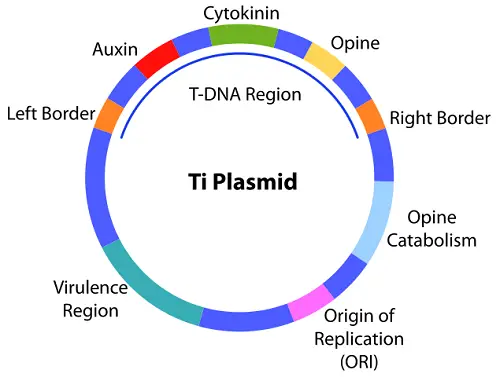
Main differences between Cosmids and Plasmids
While plasmids only occur naturally in very small numbers, they can be isolated from cells easily due to their size. These vectors are able to replicate without the need of a host cell. That means these bacterial vectors do not rely on the existence of foreign chromosomes or DNA material. In fact, there are often no changes to a plasmid when a piece of foreign DNA is manipulated into these vectors. That is why plasmids make such great genetic carries from one cell to another.
Cosmids, on the other hand, are vectors derived from plasmids within a cell. They could not exist without scientific intervention. The reason they need to be isolated is due to the fact that they are more efficient for the cloning of larger DNA strands since they have a larger carrying capacity. This is because cosmids are a hybrid between the cohesive end of a DNA strand, cos λ, and their larger plasmid parents. The cos λ head allows DNA to be inserted within a cosmid vector by way of a transfer enzyme. The combination allows for larger carrying potential in the cosmid. It can carry up to 45kb, while a plasmid holds 15kb of genetic material at most. This is one of many reasons that cosmids are used for constructing genomes of multi-gene fragments.
One other major difference between these vectors is what type of hosts they can assist. While plasmids can be used to interact with viral particles (viruses), cosmids lack the genes that can encode and read viral proteins. That means that viral particles cannot form in cosmids and, therefore, cannot interact with a viral host. However, a plasmid can be altered to have viral coding inserted within it. If a cosmid then picks up the viral plasmid vector, then it will be able to enter a viral host.
Benefits of using a plasmid
To isolate a plasmid vector, scientists must remove unnecessary fragments from the original plasmid and insert different sequences. These sequences depending on the final genetic goal. Plasmids can also be used to clone DNA samples with the use of a restriction enzyme. A polylinker, otherwise known as a sequence enzyme, can recognize many different types of restriction enzymes. This means polylinkers are often inserted into the plasmid vector so that it can clone a variation of DNA samples. Additionally, plasmids can carry genetic materials from viral hosts, whereas cosmids do not have the capacity to deal with viral elements unless altered as mentioned above.
Why isolate cosmids?
After a certain number of DNA insertions, plasmids can no longer carry genetic material. The cos λ head present in the cosmid eliminates this issue, as it acts as an excess storage carrier. Additionally, cosmids have unique properties that are not present within plasmids. Cosmids have the potential to carry multiple gene libraries, or huge chunks of genetic material. This large carrying capacity allows for longer segments of genes to be studied intact, and sometimes entire genes from large mammalian sources. When an entire gene is intact, then scientists can easily link genomes with the genetic material.
Tabular comparison of plasmid and cosmid
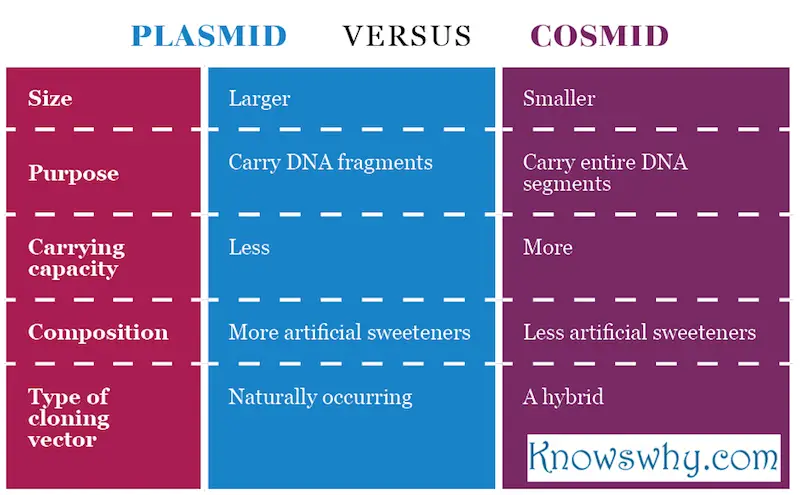
Conclusion:
A plasmid is a naturally occurring that replicates genetic information without the use of chromosomes. Cosmids are a product of the hybridization between a plasmid and cohesive end. A cosmid contains cos λ sequences that allow for the storage of 45 kb sized genetic fragments, compared to a plasmid’s meager 15kb of storage. This means that cosmids are typically preferred over plasmids when researching genetic linkages between genomes.

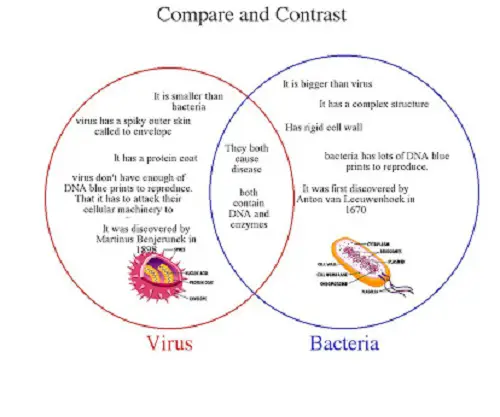
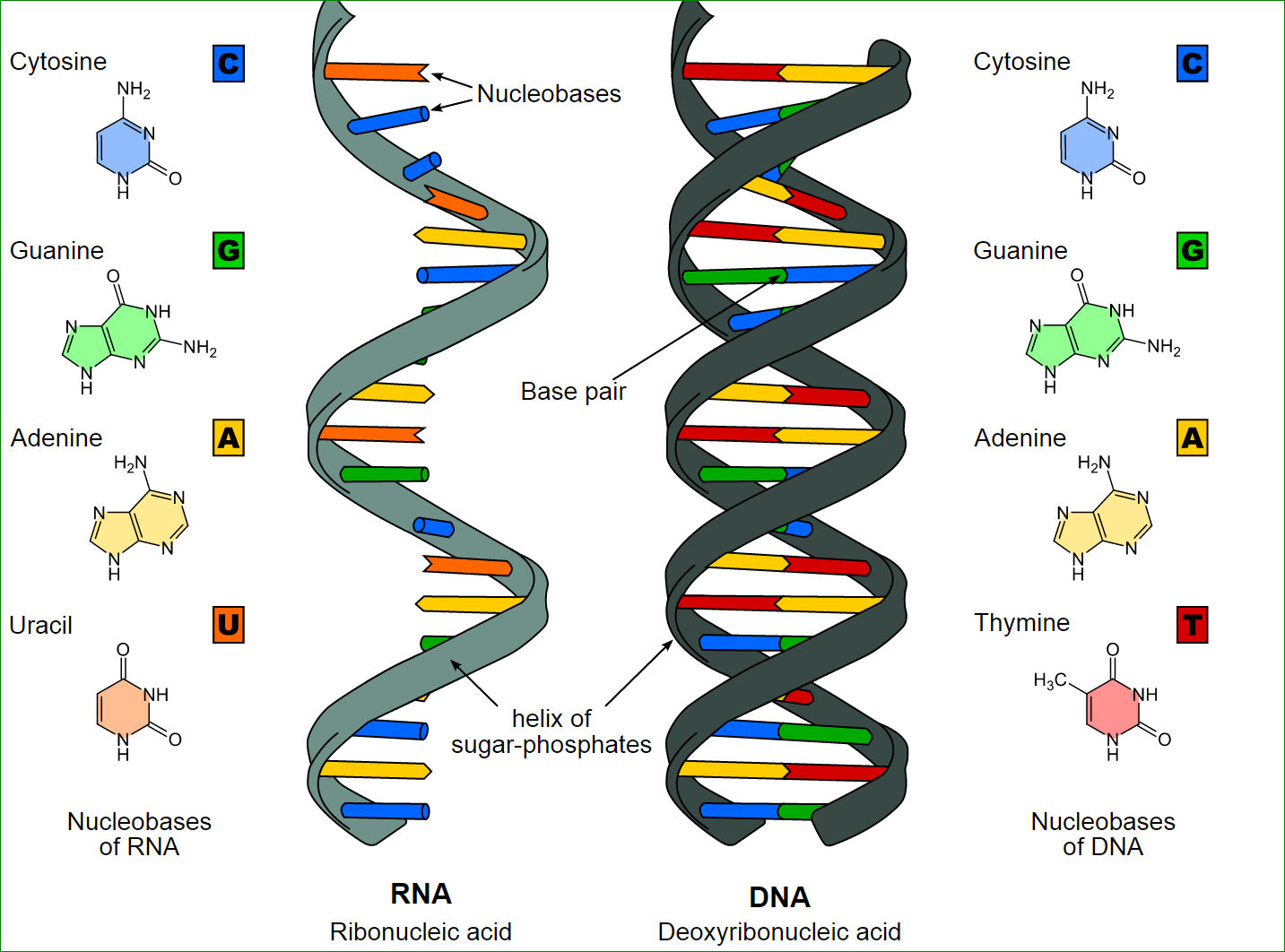
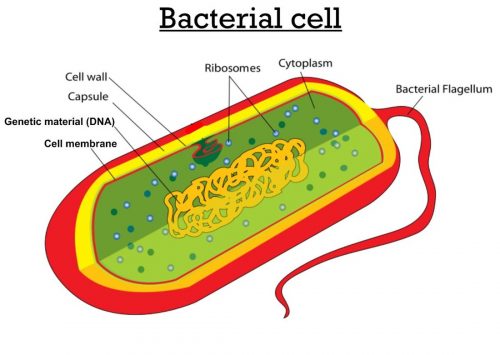
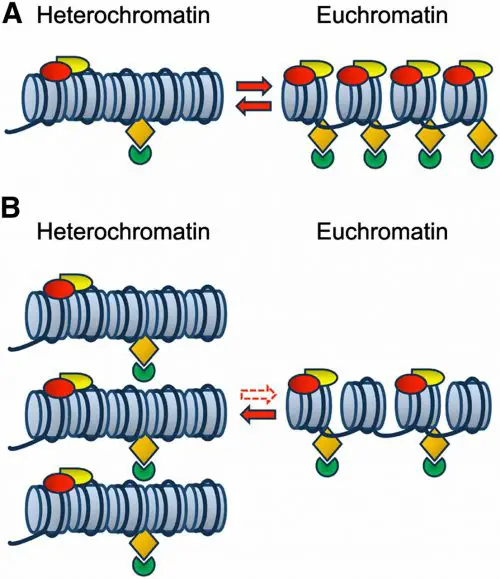
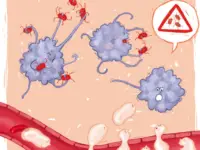






Leave a Reply